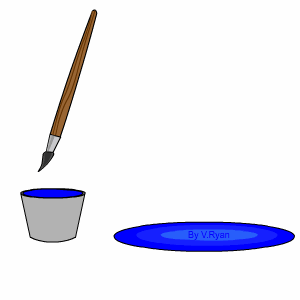



Spirit based paints require brush cleaner and sometimes a spirit based paint with damage the surface of modelling materials.
| CLICK HERE FOR INDEX PAGE | ||
| MODEL MAKING TOOLS AND EQUIPMENT - 3 | ||
| V. Ryan © 2008 | ||
| Epoxy Resin is a two part adhesive. One tube is the glue and the other is the hardener / catalyst. The catalyst speeds up the hardening / drying process. When the two ‘glues’ are mixed together the solution hardens very quickly. This is a permanent glue although it can be quite ‘messy’ to use. It can be used to join almost any material. | ||
 |
||
| Equal lengths of ‘glue’ from each tube are squeezed on to card / scrap material and mixed with a spatula. It should be applied to the surfaces to be glued quickly as it will soon dry/harden. | ||
| Tensol cement is a glue suitable for plastics such as perspex. The glue is applied to both surfaces to be joined and then the surfaces are pressed together. If possible the pieces are held under pressure in a vice or clamps. When left for a short time the pieces of perspex will be glued permanently together. The surfaces that come in contact with each other are ‘welded’ / ‘fused’ together. | ||
 |
||
| An effective contact adhesive is Evostik. However, when joining modelling foam such as styrofoam a special contact adhesive is required. Using normal contact adhesive will melt/damage the surface of foam based materials. | ||
 |
||
 |
A range of modelling paints are available. Water based
paints are probably the easiest to use and the brushes can be cleaned very
easily with warm soapy water. Spirit based paints require brush cleaner and sometimes a spirit based paint with damage the surface of modelling materials. |
|
| CLICK HERE FOR PRODUCT DESIGN INDEX PAGE | ||
| CLICK HERE FOR GRAPHICS INDEX PAGE | ||
| CLICK HERE FOR RESISTANT MATERIALS INDEX PAGE | ||
|
|